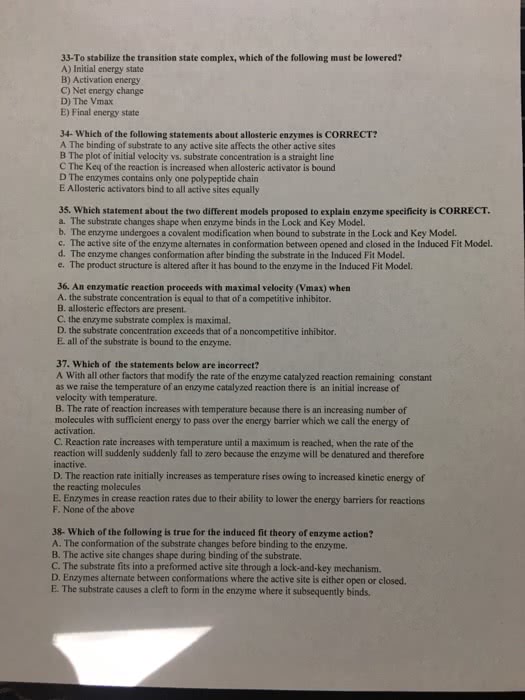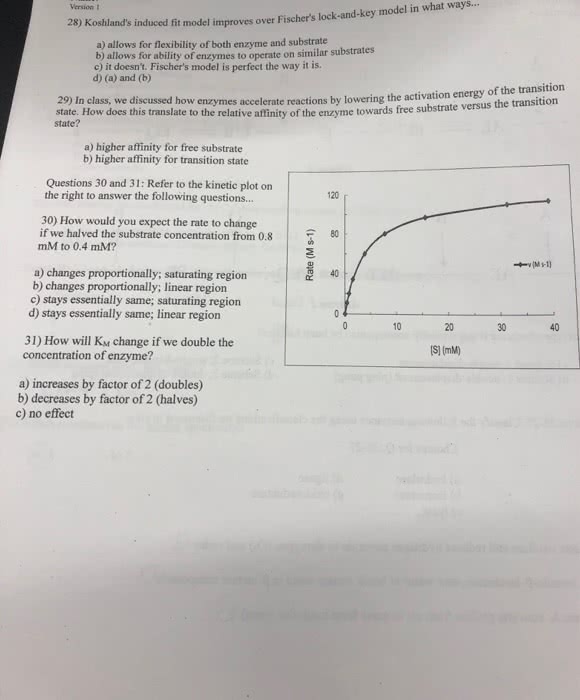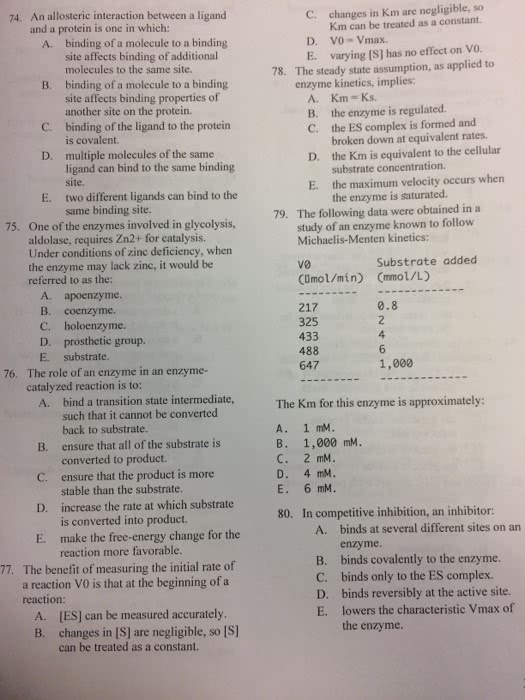BCH 2333 Lecture Notes - Lecture 3: Fischer Projection, Rate Equation, Reaction Rate Constant
85 views7 pages
18 Oct 2016
School
Department
Course
Professor
Document Summary
Uncatalyzed reaction as the [s]s increases the rate increases where v=k[a][b]. Typical rate law, rate constant k, order = sum of the exponents. Enzyme catalyzed reactions show a different rate law. 2 stages 1 where the change in concentration of substrate changes the rate and a second stage at higher substrate concentration where the rate does not change. Model to account for this 2 phase kinetic character. This makes an enzyme substrate complex like p-l complex we have already seen. The enzyme substrate complex converts substrate into product. Clearly in many cases 2 substrates or more are reacting and multiple products can be formed this is a simplified mechanism. Adding in additional substrates and chemical steps is possible. For example es goes to ep then releases p. Useful for modeling product inhibition where the product of the reaction slows the reaction rate down. Most common and simplest model for dealing with enzyme rates.
Get access
Grade+
$40 USD/m
Billed monthly

Homework Help
Study Guides
Textbook Solutions
Class Notes
Textbook Notes
Booster Class
10 Verified Answers
Class+
$30 USD/m
Billed monthly

Homework Help
Study Guides
Textbook Solutions
Class Notes
Textbook Notes
Booster Class
7 Verified Answers


